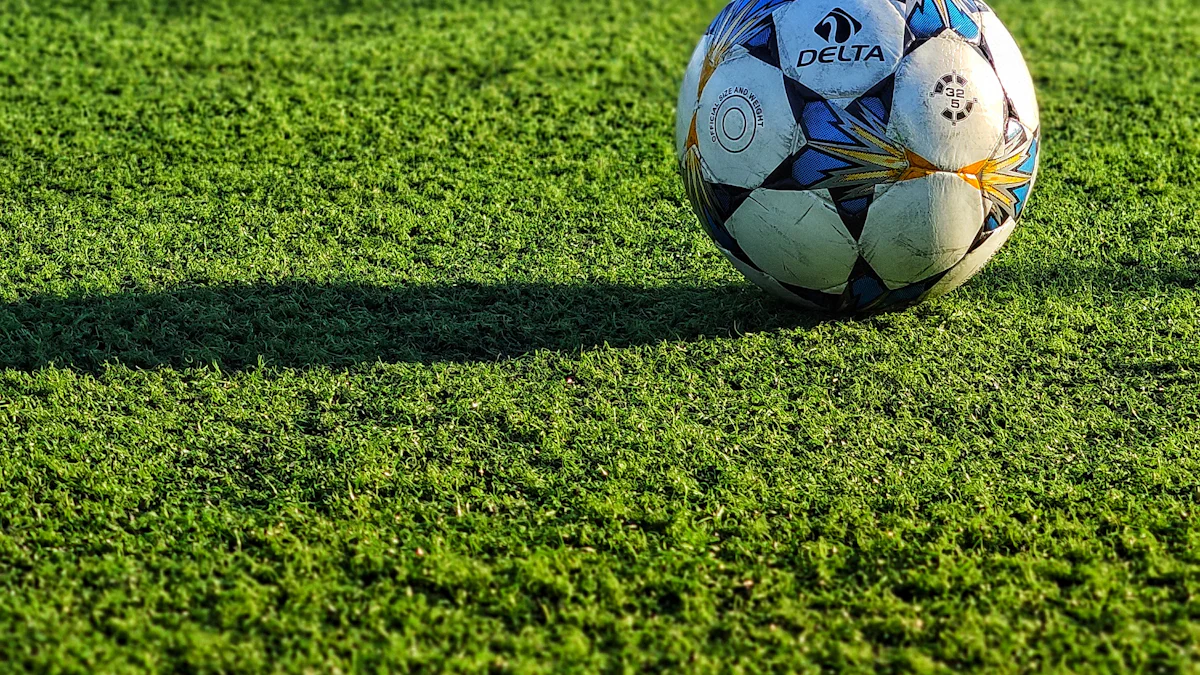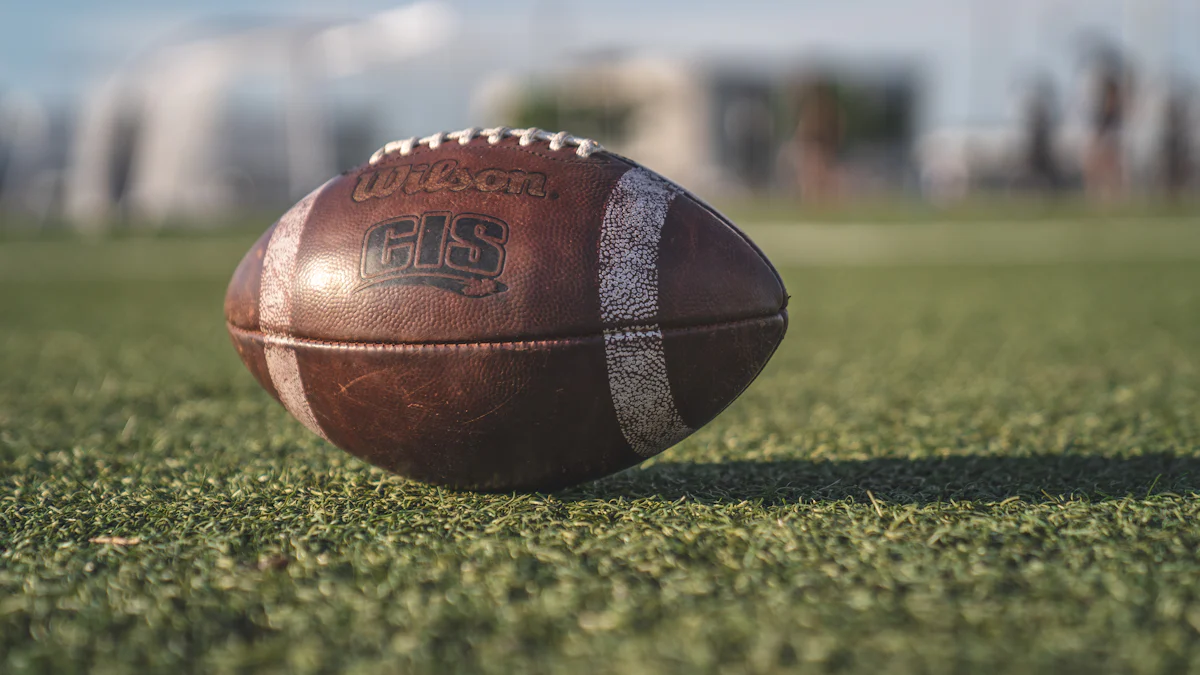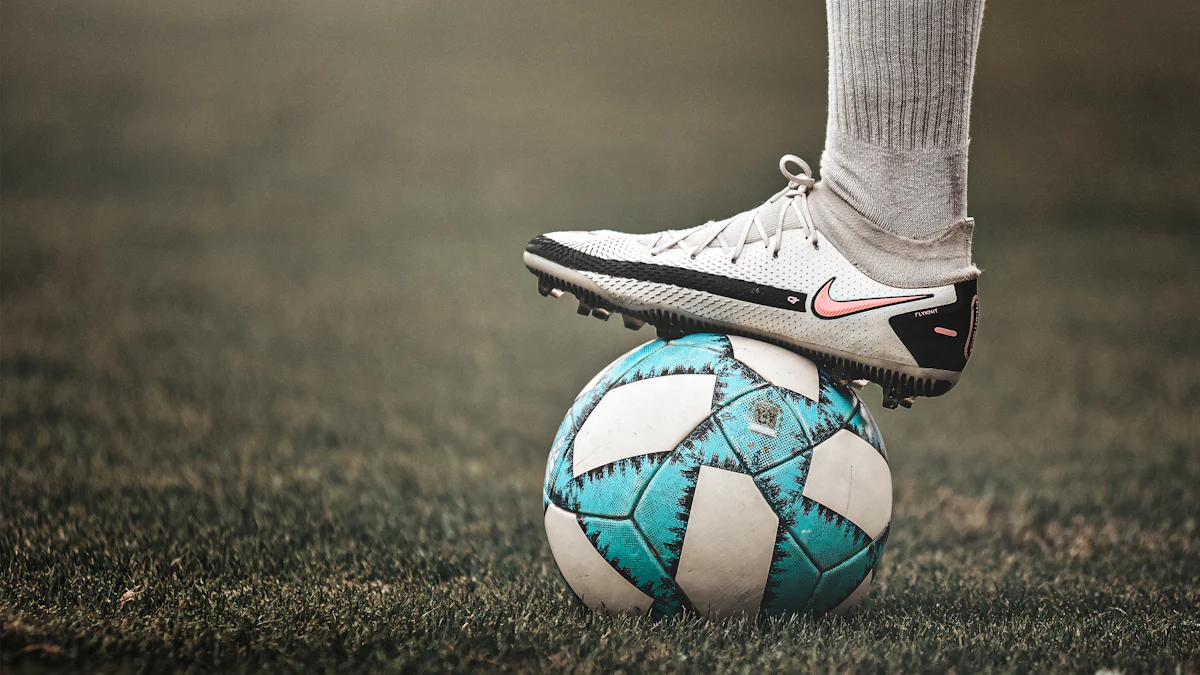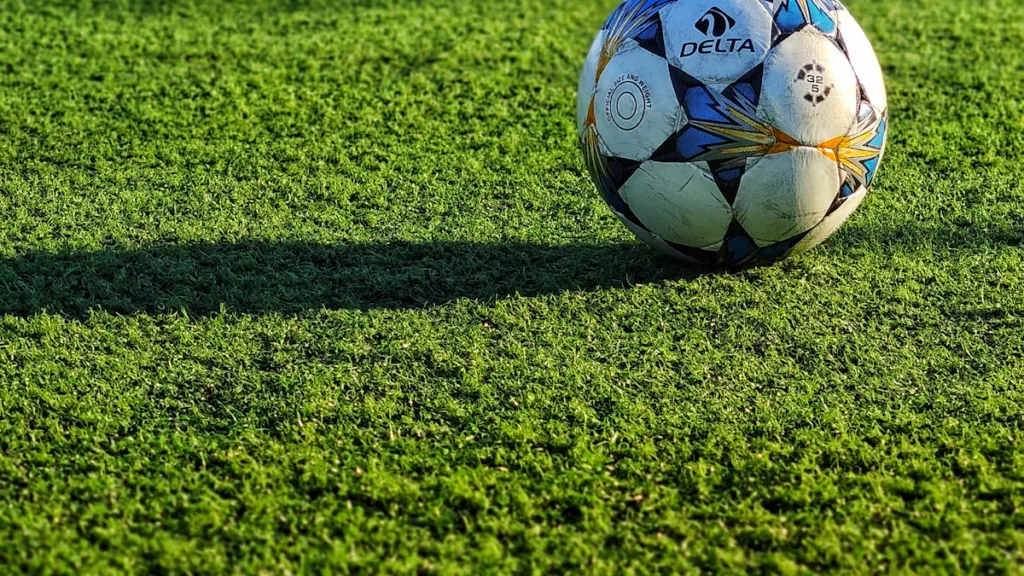
Sports balls come in many shapes and sizes, but their weight plays a crucial role in how they perform. A soccer ball, for instance, weighs between 410 and 450 grams, while a lacrosse ball ranges from 141.75 to 155.92 grams. These differences are not random. They are carefully designed to suit the unique demands of each sport. Whether you’re a player or a collector, understanding ball weight helps you appreciate the precision behind every ball’s design and its impact on gameplay.
Key Takeaways
Understanding the weight of sports balls enhances your gameplay by improving control, speed, and accuracy.
Different sports have specific weight standards to ensure fairness and consistency, impacting how players handle the ball.
Youth players benefit from lighter balls designed for their age, helping them develop skills without strain.
Choosing the right ball weight is crucial for performance; heavier balls provide stability, while lighter ones allow for faster movements.
Proper storage and display of autographed sports balls preserve their value and condition, ensuring they remain cherished collectibles.
Each sport’s ball weight is tailored to its unique demands, from the precision of a cricket ball to the momentum of a bowling ball.
Ball Weights in Team Sports

Soccer Ball Weight
Standard Soccer Ball Weight and Dimensions
The weight of a soccer ball plays a critical role in its performance on the field. A size 5 soccer ball, the standard for professional and adult matches, weighs between 410 and 450 grams (14 to 16 ounces). This range adheres to FIFA regulations, ensuring consistency across competitions. The ball’s circumference measures 27 to 28 inches, making it suitable for players aged 13 and older. This standard weight and size allow for optimal control, speed, and accuracy during gameplay.
Youth Soccer Ball Variations
For younger players, youth soccer balls are designed to match their developmental needs. A size 4 soccer ball, ideal for players aged 8 to 12, weighs between 350 and 390 grams (12 to 14 ounces). Its smaller circumference of 25 to 26 inches helps young athletes transition smoothly to larger balls as they grow. For even younger players, a size 3 soccer ball is recommended. Weighing 300 to 320 grams (10 to 11 ounces) with a circumference of 23 to 24 inches, this ball encourages proper handling and builds confidence in children aged 5 to 8. These variations ensure that players of all ages can enjoy the sport while developing their skills.
Basketball
Official NBA Basketball Weight
Basketball also has strict weight standards to maintain consistency in professional games. An official NBA basketball weighs approximately 567 grams (20 ounces) with a circumference of 29.5 inches. This weight ensures the ball provides the right balance for dribbling, shooting, and passing. The material and design of the ball further enhance grip and durability, making it suitable for high-intensity play.
Youth and Women’s Basketballs
For youth players and women, basketballs come in smaller sizes to accommodate different hand sizes and skill levels. A youth basketball typically weighs around 510 grams (18 ounces) with a circumference of 28.5 inches. This size is perfect for players aged 9 to 11. Women’s basketballs also follow similar specifications, ensuring they are lighter and easier to handle compared to the standard NBA ball. These adjustments make the game more accessible and enjoyable for diverse groups of players.
Football (American)
NFL Football Weight and Size
In American football, the ball’s weight and size are crucial for performance. An official NFL football weighs between 397 and 425 grams (14 to 15 ounces) with a length of 11 inches and a circumference of 22 inches at its widest point. This design allows quarterbacks to throw precise passes and players to maintain a firm grip during intense gameplay. The leather construction and laces further enhance control and accuracy.
College and Youth Footballs
College footballs are slightly smaller than NFL balls but maintain a similar weight range. This ensures that players transitioning to professional leagues can adapt easily. For younger players, youth footballs are lighter and smaller, weighing around 312 to 340 grams (11 to 12 ounces). These adjustments help young athletes develop their throwing and catching skills without being overwhelmed by the ball’s size or weight.
Baseball and Softball
Baseball Weight and Dimensions
Baseball stands out as a sport where precision matters, and the ball’s weight plays a significant role in its performance. A standard baseball weighs approximately 145 grams (5.1 ounces). Its circumference measures about 9 inches, making it compact yet sturdy for high-speed throws and hits. The tightly wound core and leather covering ensure durability and consistent flight patterns. This design allows you to experience the perfect balance of speed and control during gameplay.
Softball Variations (Fastpitch vs. Slowpitch)
Softball, though similar to baseball, uses larger and heavier balls. The weight and size vary depending on the type of game. A fastpitch softball typically weighs between 6.25 and 7 ounces (177 to 198 grams) with a circumference of 11.88 inches. This smaller size enhances speed and precision, which are crucial in fastpitch games. On the other hand, a slowpitch softball is larger, with a circumference of 12 inches and a weight of around 6.25 to 7 ounces. The increased size makes it easier to hit, aligning with the slower pace of the game. These variations ensure that each version of softball caters to its unique gameplay style.
Rugby Ball
Rugby Ball Weight and Dimensions
Rugby balls are designed for durability and performance in intense matches. A standard rugby ball weighs between 410 and 460 grams (14.5 to 16.2 ounces). Its length measures 11 to 12 inches, while the circumference around the widest part is 22 to 24 inches. The oval shape and textured surface provide a firm grip, even in wet conditions. This weight and design allow you to pass, kick, and carry the ball with precision and control. Whether you’re playing in a casual game or a professional match, the rugby ball’s specifications ensure optimal performance.
Ball Weights in Racket Sports
Racket sports rely on precision, speed, and control, and the weight of the equipment plays a significant role in achieving these qualities. The balls and shuttlecocks used in different racket sports are designed to meet the unique demands of each game. Let’s explore the weights and features of these essential items.
Tennis Ball
Standard Tennis Ball Weight
Tennis balls are crafted to balance durability and performance. A standard tennis ball weighs between 56.7 and 58.5 grams (2 to 2.1 ounces). This weight ensures consistent bounce and speed during matches. The felt covering enhances grip and reduces wear, making the ball suitable for both hard and soft court surfaces. These specifications are regulated by the International Tennis Federation (ITF) to maintain uniformity in professional and recreational games.
Variations for Training and Youth
For training and youth players, tennis balls come in modified versions to suit different skill levels. Training balls are often slightly heavier or lighter, depending on the purpose. For example, pressureless balls weigh more and last longer, making them ideal for practice sessions. Youth tennis balls, on the other hand, are lighter and softer. These balls help young players develop their skills without straining their arms. They also bounce lower, allowing better control for beginners.
Table Tennis Ball
Official ITTF Table Tennis Ball Weight
Table tennis balls may be small, but their weight is critical for fast-paced gameplay. An official table tennis ball weighs 2.7 grams (0.095 ounces). The International Table Tennis Federation (ITTF) mandates this weight to ensure fair competition. These balls are made from celluloid or plastic and have a diameter of 40 millimeters. Their lightweight design allows for rapid spins and quick reflexes, which are hallmarks of the sport.
Badminton Shuttlecock
Weight and Unique Design of Shuttlecocks
Unlike traditional balls, badminton uses shuttlecocks, which have a unique design and weight. A standard shuttlecock weighs between 4.74 and 5.50 grams (0.167 to 0.194 ounces). The feathered structure, combined with a cork base, creates a lightweight yet aerodynamic design. This allows the shuttlecock to travel at high speeds while maintaining stability in the air. Training shuttlecocks may weigh slightly more to help players build strength and accuracy. The precise weight ensures that you can control your shots and adapt to the fast-paced nature of badminton.
Ball Weights in Niche Sports
Bowling Ball
Weight Ranges for Bowling Balls
Bowling balls come in a variety of weights to suit players of different skill levels and preferences. The weight typically ranges from 6 pounds to 16 pounds. Lighter balls, such as those weighing 6 to 10 pounds, are ideal for beginners or younger players. These lighter options allow you to focus on technique without straining your arm. On the other hand, experienced bowlers often prefer heavier balls, ranging from 12 to 16 pounds. Heavier balls provide more momentum, which can lead to stronger pin action and higher scores. Choosing the right weight ensures you can maintain control while maximizing performance.
Custom Bowling Ball Weights
Custom bowling balls offer a tailored experience for serious players. You can have the ball drilled to fit your hand perfectly, which improves grip and reduces fatigue during long games. Some players also opt for custom weights within the standard range to match their unique playing style. For instance, a slightly heavier ball might help you achieve a more powerful throw, while a lighter one could enhance precision. Customization ensures that your bowling ball feels like an extension of your hand, giving you confidence with every roll.
Golf Ball
Standard Golf Ball Weight
Golf balls may be small, but their weight plays a significant role in the game. A standard golf ball weighs 1.62 ounces (45.93 grams). This weight adheres to regulations set by the United States Golf Association (USGA) and ensures consistency across all levels of play. The ball’s design, including its dimpled surface, works in harmony with its weight to optimize flight distance and accuracy. Whether you’re a beginner or a seasoned golfer, the standard weight of a golf ball allows you to focus on improving your swing and mastering the game.
Bocce Ball
Bocce Ball Weight and Variations
Bocce balls vary in weight depending on the type of game and the players involved. A standard bocce ball weighs between 920 and 1,070 grams (2 to 2.36 pounds). This weight makes the ball sturdy enough for outdoor play while remaining manageable for players of all ages. For casual games, lighter balls are available, making it easier for children or beginners to participate. Competitive bocce players often prefer heavier balls, as they provide better control and precision during throws. The variety in bocce ball weights ensures that everyone can enjoy this timeless sport, regardless of their skill level or physical strength.
Cricket Ball
Standard Cricket Ball Weight
The weight of a cricket ball plays a vital role in the sport. A standard cricket ball weighs between 155.9 and 163 grams (5.5 to 5.75 ounces). This range ensures consistency in gameplay across all levels, from amateur matches to professional tournaments. The ball’s core is made of cork, which is tightly wound with string and covered in leather. This construction provides durability and allows the ball to maintain its shape during intense play. The weight and design of the cricket ball enable bowlers to deliver precise swings and spins, while batsmen can focus on timing and control.
Differences Between Men’s and Women’s Cricket Balls
Cricket balls used in men’s and women’s games differ slightly to accommodate the physical demands of the players. In women’s cricket, the ball weighs between 140 and 151 grams (4.9 to 5.3 ounces). This lighter weight makes it easier for players to achieve speed and accuracy. The circumference of the women’s cricket ball is also smaller, measuring around 8.25 to 8.88 inches, compared to the men’s ball, which measures 8.81 to 9 inches. These differences ensure that both male and female players can perform at their best while maintaining the integrity of the game.
Lacrosse Ball
How Much Does a Lacrosse Ball Weigh?
A regulation lacrosse ball weighs between 141.75 and 149 grams (5 to 5.25 ounces). This weight adheres to the standards set by governing bodies like the National Operating Committee on Standards for Athletic Equipment (NOCSAE). The ball’s weight is critical for maintaining balance during passes, shots, and catches. Whether you’re playing in a casual match or a professional league, the consistent weight of the lacrosse ball ensures fair and competitive gameplay.
Dimensions of a Lacrosse Ball
The dimensions of a lacrosse ball are equally important as its weight. A regulation lacrosse ball has a diameter of 2.5 inches (6.35 cm). Its spherical shape and smooth surface allow for optimal aerodynamics, making it easier to control during fast-paced games. The ball is typically made of solid rubber, which provides durability and a firm grip. These specifications are designed to meet the demands of the sport, ensuring that players can execute precise movements on the field. For more details, you can refer to a comprehensive lacrosse ball guide, which explains the importance of these features in enhancing your performance.
Why Does Ball Weight Matter in Sports?
Impact on Gameplay
Speed, Control, and Accuracy
The weight of a ball directly influences its behavior during gameplay. A lighter ball moves faster, making it ideal for sports like badminton or table tennis, where quick reflexes are essential. Conversely, heavier balls, such as those used in bowling or bocce, provide greater control and stability. For example, a bowling ball weighing up to 16 pounds generates more momentum, which helps knock down pins effectively. In soccer, the standard ball weigh of 410 to 450 grams ensures a balance between speed and precision, allowing players to execute accurate passes and powerful shots. The right weight enhances your ability to control the ball, improving your overall performance.
Player Performance
Physical Demands and Skill Adaptation
The weight of a ball also affects how players adapt their skills and manage physical demands. Heavier balls, like those used in cricket or bocce, require strength and endurance. For instance, a cricket ball weighing 156 grams challenges bowlers to maintain accuracy while delivering high-speed throws. On the other hand, lighter balls, such as youth soccer balls, help younger players develop their skills without overexertion. Adjusting to the appropriate ball size and weight ensures that you can focus on refining your technique while minimizing the risk of injury. This adaptability is crucial for players at all levels, from beginners to professionals.
Equipment Compatibility
Matching Ball Weight to Sport-Specific Gear
Every sport requires equipment designed to complement the weight of its ball. Using the wrong combination can hinder performance and even cause damage to the gear. For example, a tennis racket must align with the weight of a tennis ball to ensure proper balance and control. Similarly, a bowling lane is built to withstand the impact of heavy bowling balls, while lighter balls would not generate the same pin action. Manufacturers adhere to strict standards to maintain consistency, as seen with the soccer ball weigh specifications. Choosing the right equipment for the ball weight ensures optimal gameplay and prolongs the lifespan of your gear.
Autographed Sports Balls

Popular Autographed Balls
Basketballs Signed by NBA Legends
Basketballs signed by NBA legends hold a special place in sports memorabilia. These autographed balls often feature signatures from iconic players like Michael Jordan, LeBron James, or Kobe Bryant. Their value stems from the legacy these players have built through their extraordinary careers. Owning a basketball signed by such legends connects you to the history of the sport. The ball’s size and surface make it an ideal canvas for clear, bold signatures, which enhances its appeal to collectors.
Baseballs Signed by MLB Stars
Baseballs signed by MLB stars are among the most sought-after collectibles. Players like Babe Ruth, Derek Jeter, and Shohei Ohtani have left their mark on the game, and their autographs carry immense significance. The compact size of a baseball allows for a clean and prominent signature, often accompanied by inscriptions like career milestones or personal messages. These details add a unique touch, making each signed baseball a one-of-a-kind treasure for fans and collectors.
Soccer Balls Signed by World Cup Players
Soccer balls signed by World Cup players capture the excitement of the world’s most popular sport. Signatures from players like Lionel Messi, Cristiano Ronaldo, or Megan Rapinoe turn an ordinary soccer ball into a cherished keepsake. The ball’s larger surface provides ample space for multiple autographs, making it perfect for commemorating team achievements. Whether it’s a ball from a championship match or a training session, owning one signed by top players lets you hold a piece of soccer history.
Lacrosse Balls Signed by Professional Players
Lacrosse balls signed by professional players offer a unique addition to any sports memorabilia collection. These balls, weighing between 5.0 and 5.25 ounces and measuring 2.5 inches in diameter, provide a compact yet meaningful canvas for autographs. Players from professional leagues or national teams often sign these balls during events or tournaments. Their smooth rubber surface ensures the signature remains clear and durable over time. A signed lacrosse ball not only celebrates the sport but also highlights the skill and dedication of its athletes.
Value of Autographed Balls
Factors That Influence Value (Player, Condition, Rarity)
The value of an autographed sports ball depends on several factors. First, the player’s reputation plays a significant role. A signature from a legendary athlete or a rising star in their prime holds greater worth. Second, the condition of the ball and the clarity of the autograph impact its value. A well-preserved ball with a legible signature fetches higher prices. Lastly, rarity adds to the appeal. Limited-edition balls, those signed during historic events, or autographs from players who rarely sign memorabilia are highly coveted. Understanding these factors helps you assess the true worth of your autographed ball and appreciate its significance in the world of sports collectibles.
Displaying and Preserving Autographed Sports Balls
Importance of Proper Storage
Preventing Fading and Damage
Proper storage ensures your autographed sports balls remain in pristine condition. Exposure to sunlight or artificial light can cause signatures to fade over time. Heat and humidity may also damage the ball’s material, leading to cracks or discoloration. To prevent these issues, store your autographed balls in a cool, dry place away from direct light sources. Use acid-free tissue paper or cloth to wrap the ball if you plan to keep it in a box. This extra layer of protection helps preserve both the signature and the ball’s surface.
Choosing the Right Display Case
UV-Protected Display Cases
UV rays are one of the biggest threats to autographed memorabilia. A UV-protected display case shields your ball from harmful light exposure, preserving the vibrancy of the signature. These cases often feature clear acrylic or glass panels that block UV rays while allowing you to showcase your prized possession. Whether it’s a basketball signed by an NBA legend or a soccer ball autographed by a World Cup star, a UV-protected case ensures your collectible remains a centerpiece for years.
Custom Cases for Specific Ball Types
Not all sports balls are the same size or shape, so a custom display case can provide the perfect fit. For example, a rugby ball requires a different case than a baseball due to its oval shape. Custom cases also enhance the presentation of your memorabilia. Many options include engraved plaques or stands that highlight the ball’s significance, such as the player’s name or the event where it was signed. Investing in a tailored case not only protects your ball but also elevates its display value.
Maintenance Tips
Cleaning and Handling Autographed Balls
Cleaning an autographed ball requires care to avoid damaging the signature. Use a soft, dry cloth to gently remove dust or dirt. Avoid using water, cleaning sprays, or abrasive materials, as these can smear or erase the autograph. When handling the ball, wear clean gloves to prevent oils from your hands from transferring onto the surface. If gloves are unavailable, hold the ball by its edges to minimize contact with the signed area. Regular maintenance ensures your collectible stays in excellent condition, retaining both its aesthetic and monetary value.
Sports balls come in a variety of weights, each crafted to meet the specific needs of its sport. Understanding these weights helps you improve your gameplay and appreciate the design behind each ball. For example, a soccer ball’s weight ensures balance for precise passes, while a bowling ball’s heft generates momentum for powerful strikes. If you’re a collector, preserving autographed balls is essential. Proper storage, like UV-protected cases, prevents fading and damage. Whether you’re playing or collecting, knowing the importance of ball weight deepens your connection to the sport and its history.
FAQ
What is the heaviest sports ball?
The heaviest sports ball commonly used is the bowling ball, which can weigh up to 16 pounds. This weight provides the momentum needed to knock down pins effectively. In contrast, other sports balls, like a soccer ball or basketball, weigh significantly less.
Why do sports balls have specific weight ranges?
Sports balls have specific weight ranges to ensure consistency and fairness in gameplay. The weight affects how the ball moves, how players handle it, and how it interacts with the playing surface or equipment. Governing bodies set these standards to maintain uniformity across all levels of play.
How does ball weight impact player performance?
Ball weight influences your ability to control, throw, or hit the ball. A heavier ball requires more strength and precision, while a lighter ball allows for faster movements. For example, a cricket ball challenges bowlers to maintain accuracy, while a lighter badminton shuttlecock enables quick reflexes.
Are there different weights for youth and adult sports balls?
Yes, many sports offer lighter and smaller balls for youth players. These adjustments help younger athletes develop their skills without straining their muscles. For instance, youth soccer balls weigh less than standard ones, making them easier to control and kick.
Can ball weight affect injury risk?
Using a ball that is too heavy or too light for your skill level can increase the risk of injury. A heavier ball may strain your muscles, while a lighter ball might lead to improper technique. Choosing the right ball weight for your age and ability helps reduce this risk.
Why are autographed sports balls valuable?
Autographed sports balls hold value because they connect you to iconic players or historic moments. Factors like the player’s reputation, the condition of the ball, and the rarity of the signature determine its worth. Proper care ensures the ball retains its value over time.
How should you store autographed sports balls?
Store autographed sports balls in a cool, dry place away from direct sunlight. Use UV-protected display cases to prevent fading. Wrapping the ball in acid-free tissue paper adds an extra layer of protection against damage.
Do training balls weigh differently than standard balls?
Yes, training balls often have different weights to serve specific purposes. For example, pressureless tennis balls are heavier and more durable for practice sessions. Lighter training balls in sports like soccer or volleyball help beginners improve their skills gradually.
What happens if a ball doesn’t meet weight regulations?
If a ball doesn’t meet weight regulations, it cannot be used in official matches. Governing bodies enforce strict standards to ensure fair competition. Using an improperly weighted ball can also affect gameplay and player performance.
How do you choose the right ball weight for your sport?
Consider your age, skill level, and the sport’s requirements. Youth players should use lighter balls designed for their development. Advanced players often prefer standard-weight balls for better performance. Always check the sport’s official guidelines to make the best choice.

